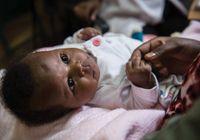Key Points
- The Field Guide provides guidance and tools to support implementation of good quality newborn health services in humanitarian settings in order to reduce neonatal mortality and morbidity. It is a programming and advocacy tool, not a clinical guide.
- The Field Guide complements the Minimum Initial Service Package (MISP) for SRHabbreviation in crisis situations and the 2018 Inter-agency Field Manual on Sexual and Reproductive Health in Humanitarian Settings.
- The Field Guide is intended for health staff from humanitarian and development agencies including field-level program managers and surge responders as well as health policy staff and program directors at the national, regional and global levels.
- The Field Guide includes background information, technical content, strategic and programmatic considerations, resource lists and annexes with practical tools and templates.
- Specific areas that are not covered in this guide, but are critical complementary packages to these core newborn health services, include maternal health care; prevention of mother-to-child transmission of HIVabbreviation; water, sanitation and hygiene; nutrition interventions; immunization; early childhood development; and protection services.

